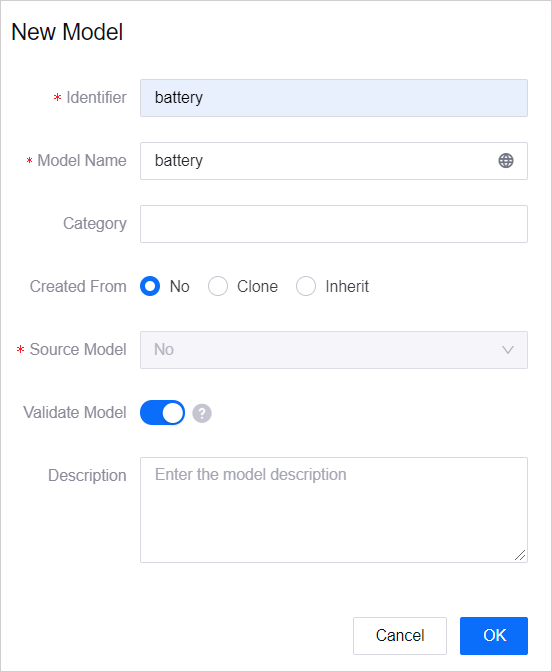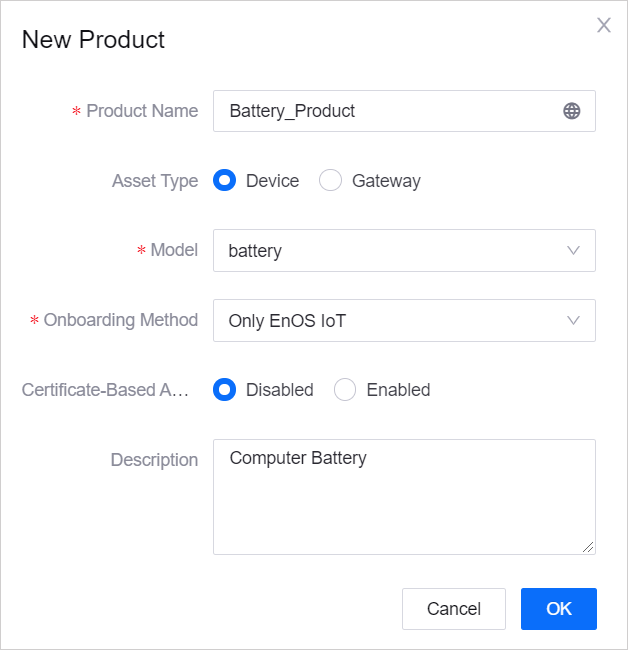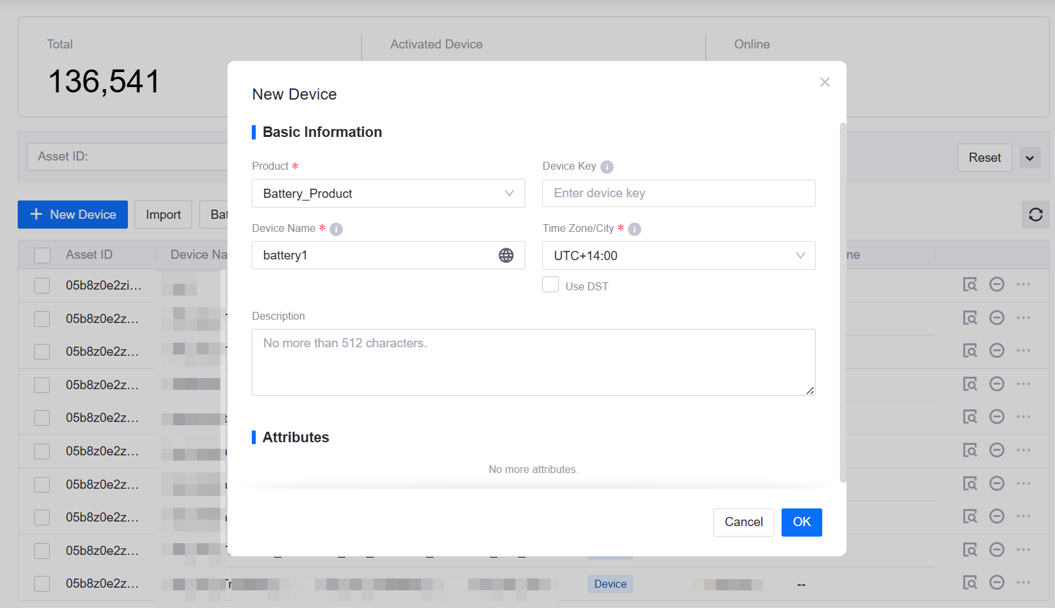Unit 1: Registering a Device on EnOS¶
Before connecting a device to EnOS, you need to register the device on EnOS Application Portal, which includes defining the device model, creating a product, registering the device, and creating an asset tree for the device.
This tutorial uses a battery device as an example to show how to register a smart device that connects directly to EnOS Cloud.
Step 1: Defining a Model¶
A model is the abstraction of the features of an object that is connected to the Device Connectivity & Management. In EnOS, the device model defines the features of a device, including its attributes, measurement points, services, and events. For more information about models, see Basic Modeling: Designing and Creating Models.
This step assumes that there is no existing device model to be reused on EnOS. Refer to Creating a Model from Scratch to create a new model from scratch and fill the information as follows:
Group: Custom(custom)
Name: battery
Business ID: battery
Model Usage: Device Connection
Description: Battery Model

On the model details page, refer to Creating Model Elements to create the following attributes and measurement points:
Attribute
Category: Attribute
Name: brand
ID: brand
Data Type: String
Max length: 64
Unit: kWp
Default value: None
Is Required: Yes
Is Writable: Yes
Measurement Point
Category: Measurement Point
Name: temperature
ID: temperature
Point Type: AI
Data type: double
Aggregation: sum
Unit: kW
Quality Indicator: No
Is Writable: Yes
Command
Category: Command
Name: start_charging
IDr: start_charging
Input Parameter:
Name: result
ID: result
Data Type: object. Define the following parameters for the data type:
Parameter Name: point1
Parameter ID: point1
Data Type: integer
Output Parameter:
Name: point1
ID: point1
Data Type: object. Define the following parameters for the data type:
Parameter Name: point1
Parameter ID: point1
Data Type: integer
Once completed, you can use this model to create products and register devices.
Step 2: Creating a Product¶
A product is a collection of devices with the same features. Using the device model as a base, a product further defines the communication specifications for the device.
In this step, create a product called Battery_Product. It is assumed that a device of this product model sends data in JSON format and that the data transmission is not encrypted using the CA certificate.
In EnOS Application Portal > Developer Console, select Device Management > Products.
Click New Product, and enter the following in the New Product window.
Product Name: Battery_Product
Asset Type: Device
Model: battery
Onboarding Method: Only EnOS IoT.
Certificate-Based Authentication: Disabled
Description: Computer Battery
Click OK to save the configuration.

For details about the configuration of a product, see Creating a Product.
Step 3: Registering a Device¶
A device is the instance of a product. It is created from a product so that it inherits not only the basic features of the model, but also the communication features of the product (for example, the device key-secret pair and device certificate used for secure communication).
In this step, create a device named battery1, which belongs to the Battery_Product created in the previous step.
In EnOS Application Portal > Developer Console, select Device Management > Device Assets.
Click New Device, and enter the following in the New Device window.
Basic Information:
Product: Battery_Product
Device Name: battery1
Device Key: Optional (it can be generated automatically by the system)
Timezone/City: UTC+08:00
Attributes:
brand: BrandName
Click OK to save the configuration.
After you complete the device creation, find the created device from the device list, and click View to enter the device details interface and obtain the device triplet
to enter the device details interface and obtain the device triplet ProductKey, DeviceKey and DeviceSecret, which will be used in the next step.

For details about device creation, see Registering a Device.